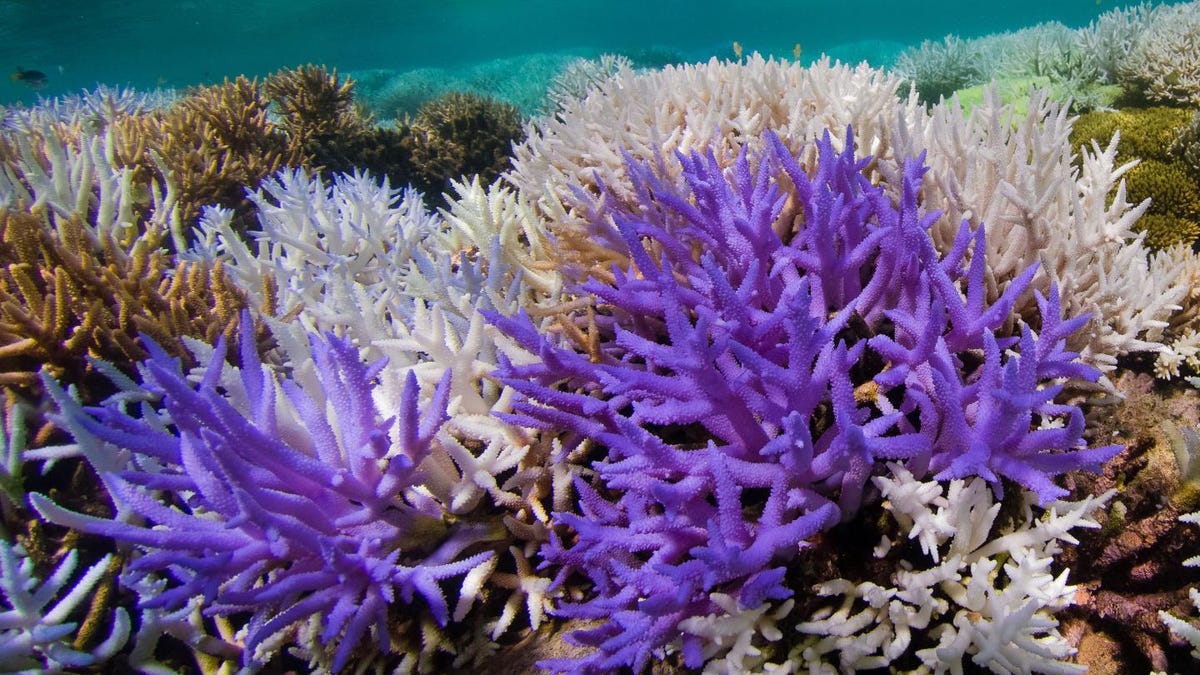Coral reefs glow neon colors in an effort to survive
The colorful pigments act as a protective "sunscreen layer" for the corals, a study finds

Colourful bleaching could help corals rebound.
While dying coral reefs are typically characterized by bleaching -- the release of algae which causes their tissue to turn white -- they can also instead turn a bright range of neon colors in a final effort to survive, according to research published Thursday. That move could help reefs rebound, the research suggests. The findings were earlier shared in an Inverse report.
Algae lives in the cells of healthy coral, harnessing energy, while corals provide shelter and nutrients. But rising temperatures impact that symbiotic relationship, and the release of algae leaves behind a bleached skeleton of coral. But other corals react differently, instead turning bright colors from bluish-purple to pink, according to the report.
Scientists say this colorful display happens as a result of the coral and algae adding a protective layer that helps them endure difficult conditions in the ocean, and that could also lure more symbiotic organisms to come to the reef. The protective layer is composed of pigments that are like green fluorescent protein, which is found in some jellyfish and glows in light. Instead of the coral's color being attributed to algae, it makes the glowing pigment itself through interaction with sunlight.
This all happens via something called an optical feedback loop. In healthy corals, the photosynthesis process of algae absorbs the majority of sunlight that reaches the reef. But when there's no algae, that light moves around inside the coral and is reflected by the white coral skeleton. That action can be "stressful" for algae and cause it not to return to the reef.
But corals can also use that excess light to their advantage by using it to help create the "colorful, photoprotective pigments that act as a 'sunscreen layer,'" Inverse says. That layer can lure back algae and lead to a return to normalcy.
"As the recovering algal population starts taking up the light for their photosynthesis again, the light levels inside the coral will drop and the coral cells will lower the production of the colourful pigments to their normal level," co-author Jörg Wiedenmann, professor and head of the University of Southampton's Coral Reef Laboratory, said in a statement.
The findings offer hope by suggesting some patches may have a stronger likelihood of recovery. Still, climate change threatens corals around the world, and scientists stress that reducing greenhouse gas emissions can help protect water quality, and by extent, coral reefs.
You can see the glowing reefs on Google Maps.

